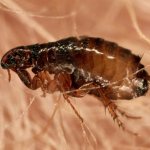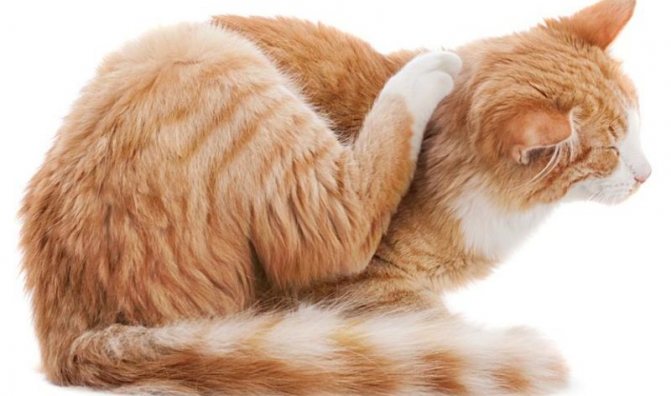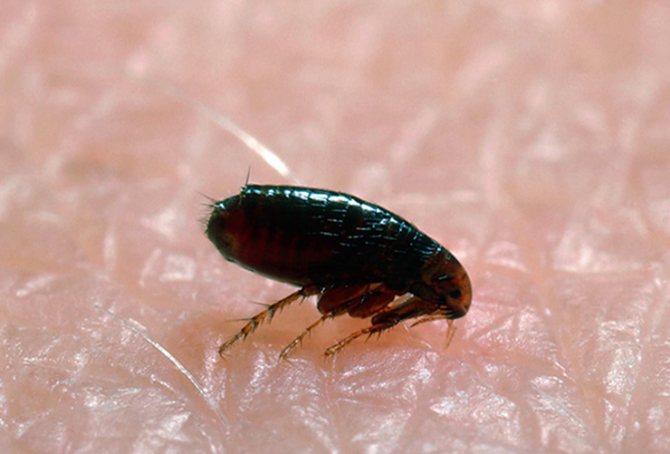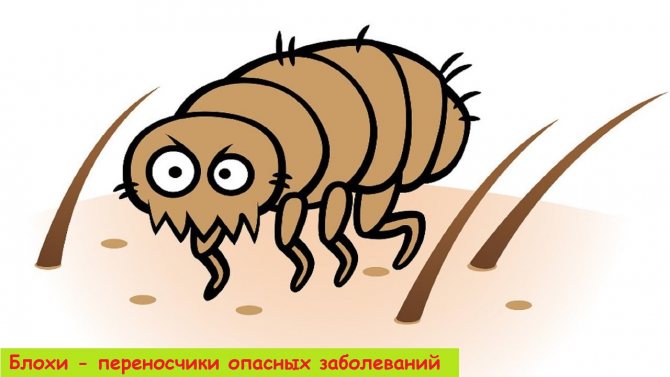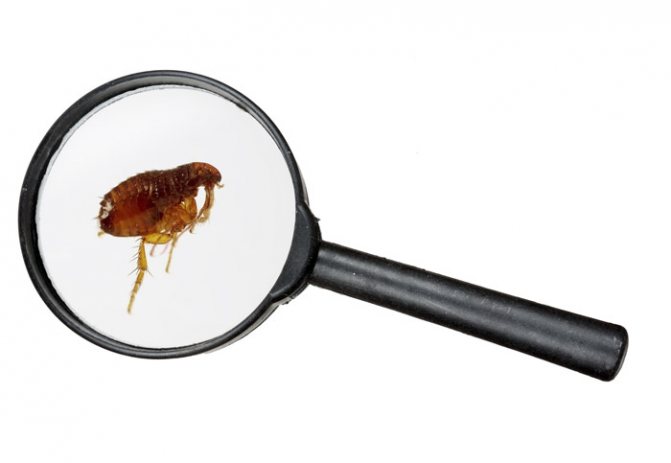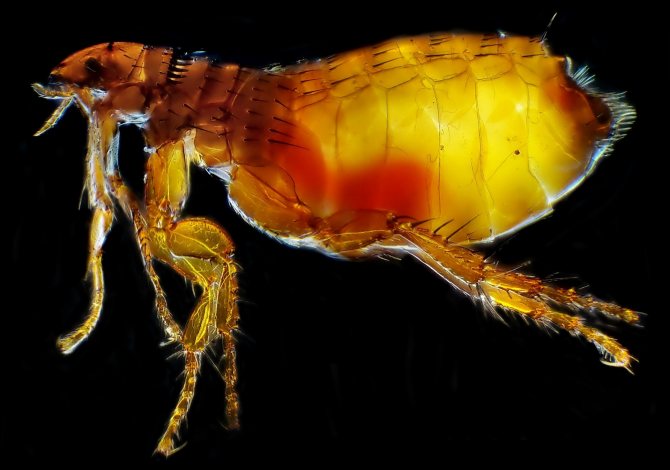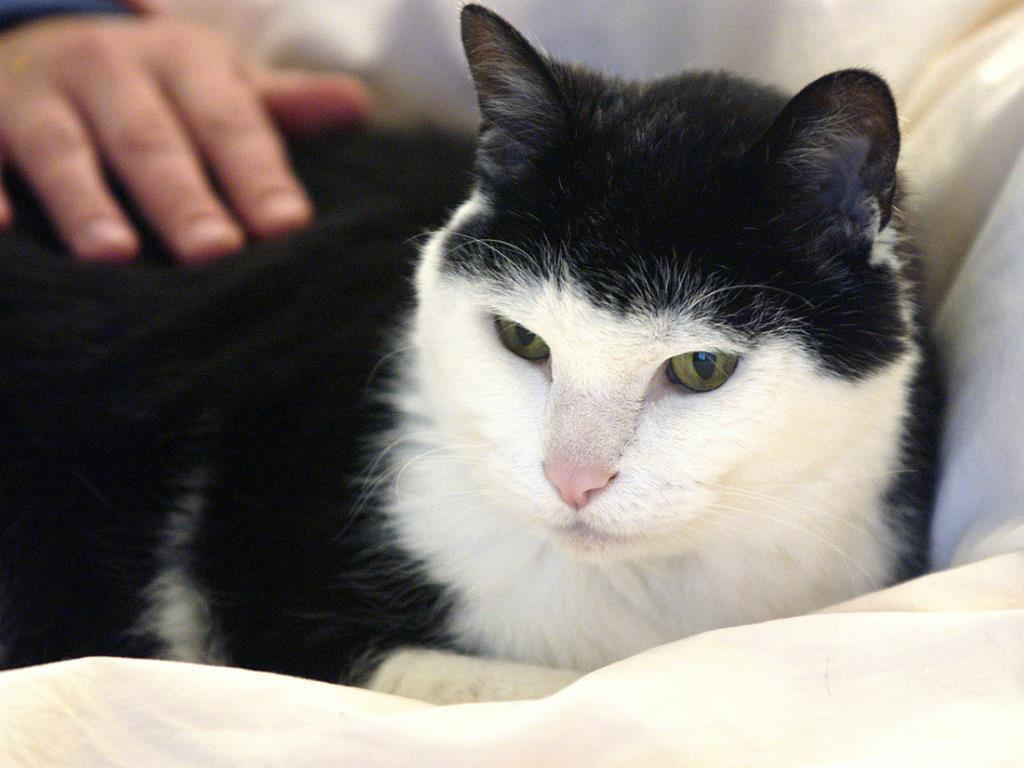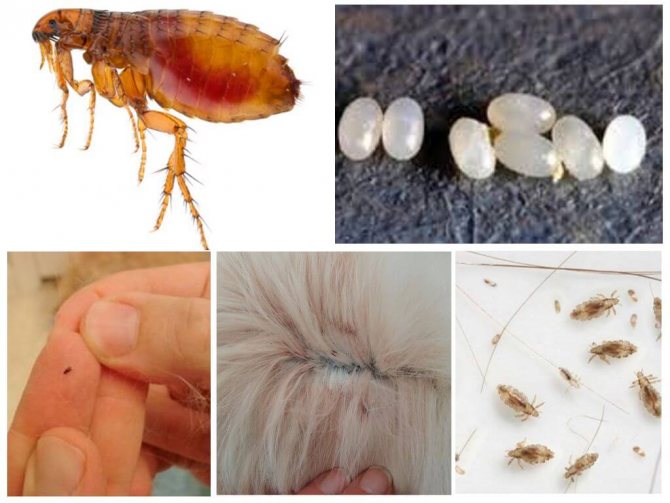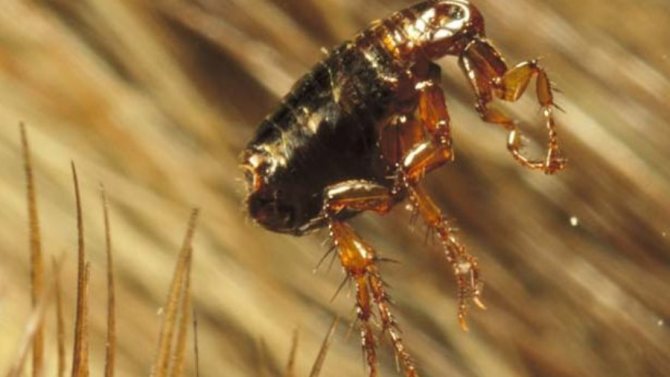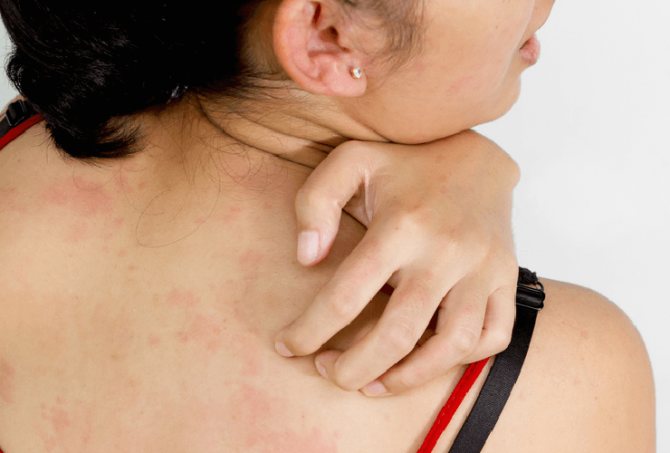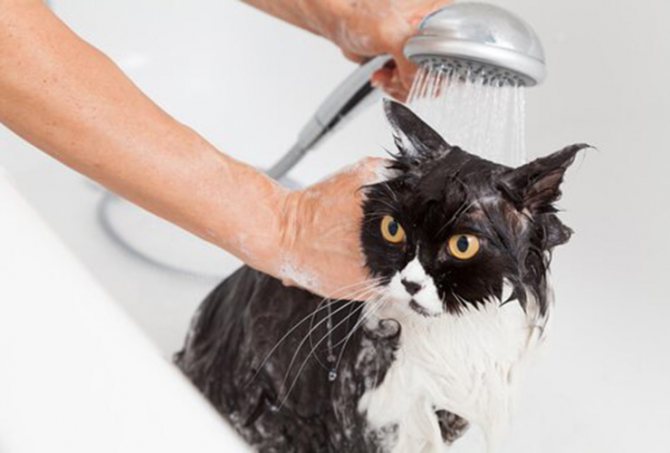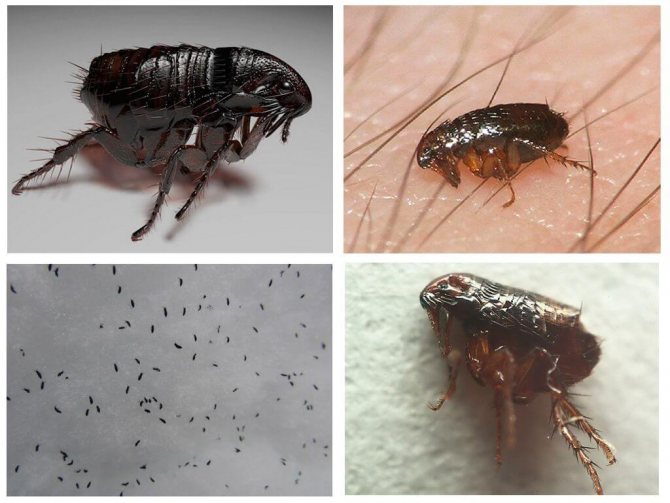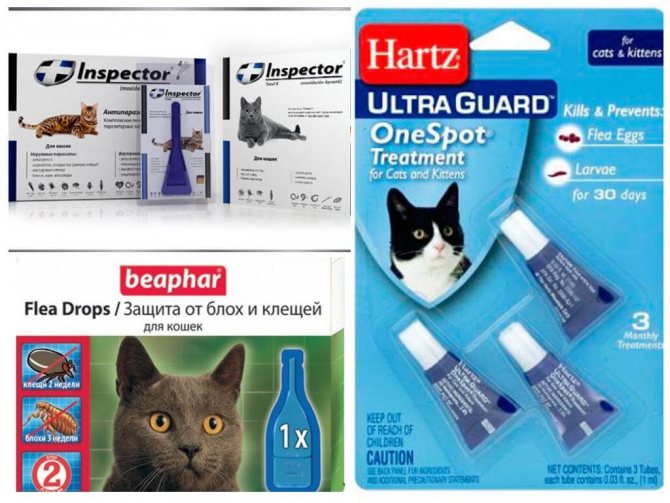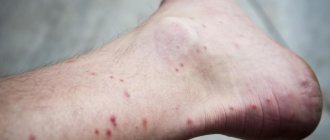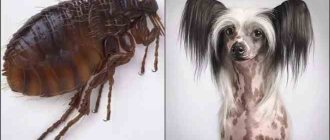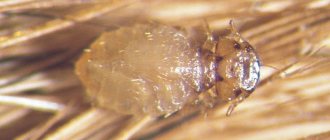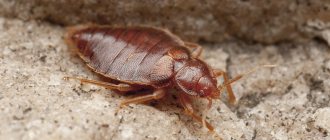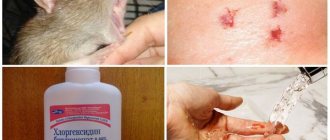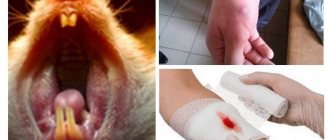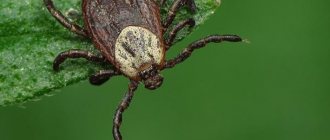The flea is a small blood-sucking insect. It lives in the environment, in the fur of animals and is a carrier of many diseases. Fleas jump high while maintaining coordination. They never fall on their backs. A hungry insect can jump for 3 days in search of food.
Fleas are blood-sucking insects that parasitize warm-blooded animals and humans.
Biology
Cat fleas live and breed in litter, litter, under carpets, in corners and behind baseboards. A hungry parasite is looking for a warm-blooded animal. The flea has keen eyesight and a developed sense of smell, noticing a victim - a cat, rat, human, attacks, bites, jumps off and hides. After dinner, the insect shoots eggs from itself.
After a few days, the larvae hatch, feed on the excrement of adults, particles of the exfoliated skin of the pet, pupate. Fleas can go for months without food. The life circle includes four phases: egg, larva, pupa, mature individual. Under favorable conditions, the development cycle is completed in two weeks.
Flea development cycle
Why do fleas appear in the apartment
A flea, first seen in a clean, tidy house, causes extreme bewilderment and displeasure of the owners. This reaction is explained by the belief of people that parasites appear only in unsanitary conditions. And yet, if you have a pet, you can suspect that the parasites were brought from a walk.
The situation becomes especially incomprehensible when there are no pets in the apartment, and fleas appear. However, experts say that in most cases, a flea is a causeless, accidental and unexpected phenomenon.
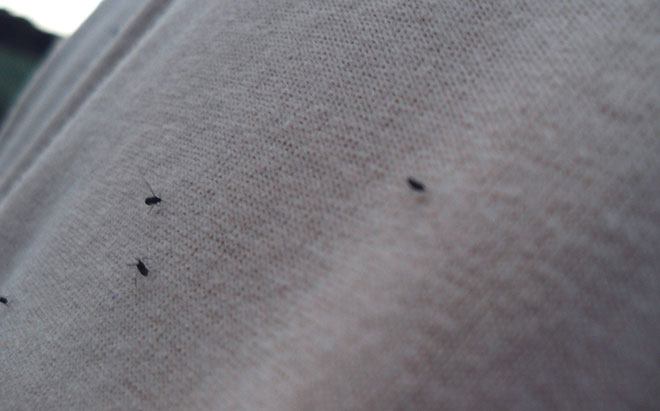
Very often, when it comes to a private house or an apartment located on the ground floor, insects penetrate through basements or directly from the street. A little less often, fleas enter the apartment through windows, doors, ventilation, cracks in the walls, joints of water pipes.
So, let's consider the main ways of getting parasites into the home:
- from neighboring apartments: through loggias, balconies, thresholds when the door is open;
- from basements (the damp warmth of basements is the best environment for flea breeding);
- from attics or technical floors;
- with dirty shoes;
- from adjacent non-residential premises: supermarkets, warehouses;
- on the fur of a pet after a walk;
- on the wool of rodents that penetrate a person's home with the onset of cold weather (especially important for private houses).
Brief description of the species
Cat fleas that are dangerous to humans are very compact in size. The maximum body length does not exceed 4 mm. The dark brown color helps to hide successfully in the thick coat. When fleas from a cat are transmitted to humans, they are easier to spot, but not much. They are capable of jumping distances of up to 30 cm, so it is very difficult to keep track of their movements.
An elongated flat body is almost impossible to crush with your fingers. You will need something sharp, such as a fingernail. Fleas in cats are dangerous to humans, but the plus is that they do not try to mask their bites with some kind of pain-relieving enzymes. Some pests can feed on blood for a long time without revealing themselves.
Here, you immediately feel a painful injection and can quickly take action. Cat fleas do not live on humans.Having taken their dose of blood, insects immediately jump off and hide in a secluded place. Parasites multiply very quickly, so the longer you don't respond to the problem, the bigger it gets.
General information about fleas
Fleas (Siphonaptera) are a squad of blood-sucking insects. Currently, 2086 species have been described by entomologists. They are found everywhere (found even in Antarctica), but they are most widespread in countries with a temperate and subtropical climate (in East and Central Asia, West America, East Africa). 524 species of parasites live on the territory of Russia.
When a flea settles on the body of birds and mammals, it begins to actively multiply and constantly bite through the skin in order to gain access to blood, which it feeds on. This causes the owner severe discomfort (itching).
The peculiarity of fleas is that different species have some differences in the structure of the oral apparatus and the composition of the enzymes responsible for the processing of blood absorbed by insects. That is why they are divided depending on which owners they mainly settle on. The fleas of the species Ctenocephalides felis choose the cat as a food source.
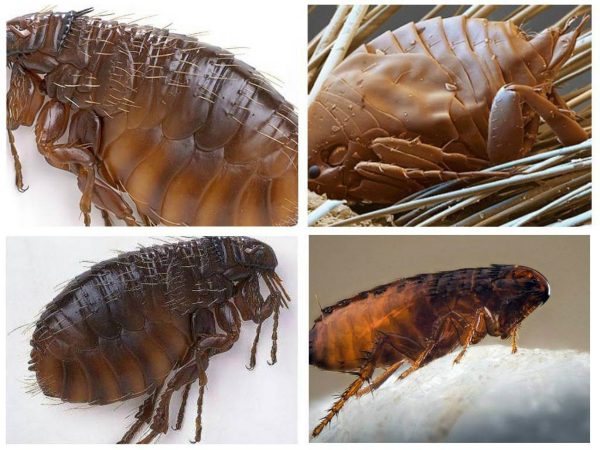

The cat flea Ctenocephalides felis is very small, its body size is from 0.75 to 5 mm
Cat flea
The insects Ctenocephalides felis have a number of characteristics. For example, a cat flea is a master of jumping and the ability to carry weights. It has been proven that this type of parasite can easily pull a load that will exceed their own weight 130 times. And they jump to a height exceeding their height by 150 times.


Fleas are not used to starving - the diet is 10-15 times a day, without access to blood, the parasite can last a maximum of two days
The endurance of the insect can also be envied. For example, it easily makes over 3000 jumps in a row. Not afraid of fleas and temperature tests. In severe frosts (more than -20 ° C), it goes into hibernation (when the metabolism slows down, and the insect, in fact, falls asleep). Freezing can last more than a year. When warming occurs, the parasite "thaws" and calmly goes in search of a food source in the form of a warm-blooded animal.
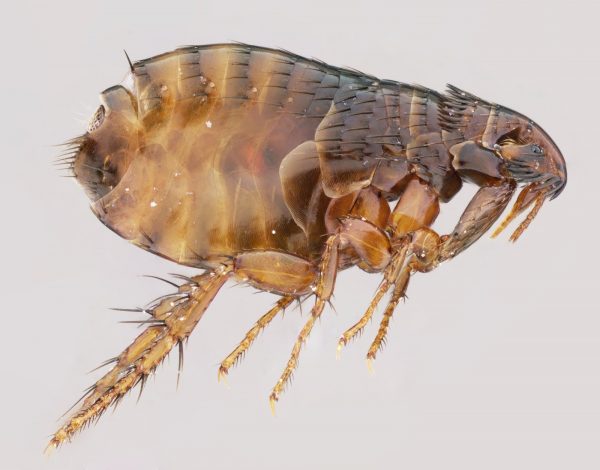

The flea owes its jumping ability to the structure of the hind legs - they are powerful and long
Attack on animals and humans
Fleas can cause great damage to the well-being of the host. If there are many insects, they drink so much blood that anemia develops. The owner is losing weight, he may die.
The flea is capable of attacking a person in the house, on a picnic, while hunting or in contact with animals. The highest concentration of adult insects is observed in the places of regular rest of the pet. Almost all larvae concentrate in the litter.
Old houses with basements, as well as apartments that are rarely cleaned, are ideal habitats for parasites. It is convenient for insects that are in ambush to attack tailed four-legged animals or make their way through cracks into apartments, feast on the blood of people.
Flea bearer
How to recognize an infection
There are several ways a cat can catch fleas. The most common reasons are:
- Fleas wait for their prey on the street, hiding on the ground or catching on the grass.
- They get into the house together with a person's clothes and shoes.
- They penetrate houses through cracks in the walls and floors (residents of the first floors are especially affected, since the basements of most houses are teeming with various parasites).
- Fleas jump from one animal to another.
- Infection can occur when hunting rodents (Ctenocephalides felis does not feed on the blood of rats and mice, but can use them as a "transport" and a place for laying eggs).
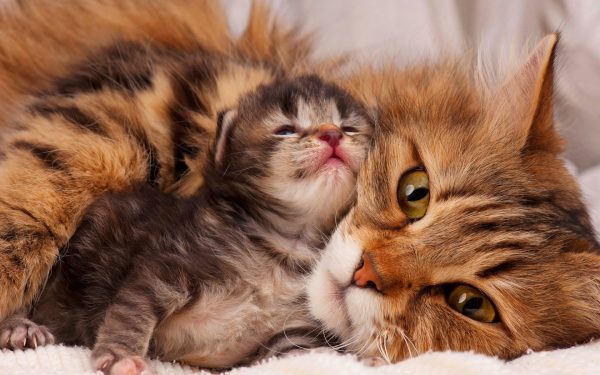

Kittens can get fleas from their mom
The presence of fleas in your cat can be recognized by the following characteristic symptoms:
- itchy skin - the cat constantly itches and bites into the fur;
- bite marks (red pimples) and scratching on the animal's body;
- small black grains - flea excrement, which are found if the cat's fur is pushed apart;
- the presence of the insects themselves - when there are a lot of parasites and they become fattened, then they can be easily seen on the pet's skin;
- White peas, the eggs of fleas, firmly attached to the hairs, they can be seen only when looking at the fur closely.
In advanced cases, when there are a lot of fleas, the cat's coat becomes thinner, it weakens from constant itching, loses appetite, suffers from insomnia, and loses weight. In place of constantly combed wounds, fistulas or abscesses, allergic dermatitis can form.
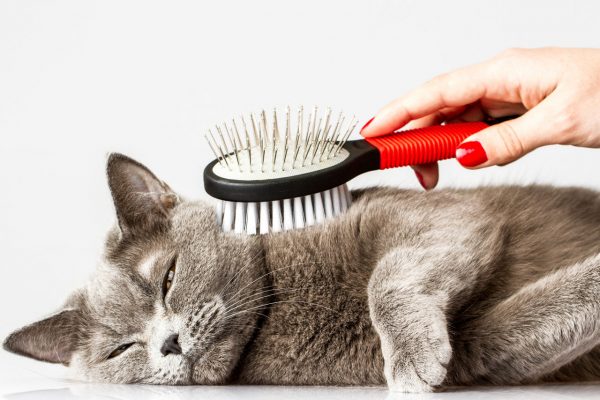

If the cat has fleas, then when combing, black grains (excrement of parasites) will fall on the floor and the insects themselves will jump out
Why are such fleas dangerous?
Even if the answer to the question whether fleas are harmful to humans were negative, they should still be destroyed instantly. Unless, of course, you are one of the sadists who like to watch your pet suffer. Constant bites cause immense discomfort. Fleas in animals often lead to insanity and death. To prevent this from happening, carefully examine your ward after each walk.
Fleas pass from dogs to humans less often than from cats, but there is also a risk here. Usually, insects do not get on human skin directly from the animal, but from the place in which it lives. After each feeding, they usually return home, which can be litter, food leftovers, crevices in the sofa. Eggs are laid there and larvae grow.
We suggest that you familiarize yourself with: What to do when white insects are in the apartment?
Do fleas jump from a cat or dog right away? Yes, but very rarely. If they have settled in wool, it means that they have already satisfied the feeling of hunger. Well-fed parasites will not seek adventure on their heads. The danger of fleas of animals to humans arises only when they are hungry and do not have the opportunity to use a traditional food source. The more insects live in an apartment, the higher the likelihood that they will attack its two-legged inhabitants.
Cat fleas do not live on humans, but each bite is fraught with a serious threat. First, it hurts, which in itself causes a little stress. Secondly, it is very dangerous to health, given what diseases fleas carry. As a result of contact, you can become infected:
- brucellosis;
- typhoid;
- encephalitis;
- anthrax;
- helminthiases, etc.
Knowing what diseases fleas carry to a person, it is difficult to treat their presence in the house calmly. Particularly dangerous is a variety of pests that specialize in rats. These insects can become the source of the plague, a terrible disease that still exists in nature. When fleas jump from animals to people while hunting or relaxing in the forest, the risk of getting a deadly infection is much higher. In such cases, you need to promptly seek medical help.
What causes the jumping ability of insects
The study of the jumping technique of insects has been conducted since 1967.The theory of how a flea jumps appeared in 2010.
Studies have shown that parasites do not jump in the dark, so low light was used to shoot. In slow motion, it was found that the joints of the insects' hind legs were used as springs and levers. This is also facilitated by the developed muscles of their legs.
The insect kneels down, its body compressed like a spring. This is possible thanks to the elastic flap in the chest of the parasite. By clinging to the thorns on its hind legs and releasing a large amount of energy, the parasite makes a strong leap.
Harmfulness to humans
The harm caused by jumping parasites to humans is as follows:
- Bites.
- Transmission of infectious diseases.
Bites cause the body's immune response to an irritant, which is expressed by the following pathological changes:
- Rash at bite sites.
- Lymph node hypertrophy.
- Allergic reactions.
- Combing with suppuration.
- Dermatitis developing into ulceration and pyoderma.
The flea bite is a focus of redness with pink edging. An enzyme from saliva, getting under the skin, provokes an allergic reaction. The resulting blister gradually dissolves. Most bites are located on the shins and feet. When attacked during sleep, fleas bite through the skin of the arms, armpits, and neck.
Allergy to bites is accompanied by a rise in temperature - 40 ° C, insomnia, headache, shortness of breath, anxiety, diarrhea.
Fleas got stuck
Cat fleas are capable of transmitting the pathogens of the following diseases to humans:
- Typhus.
- Anthrax.
- Brucellosis.
- Tick-borne encephalitis.
- Helminths.
Typhoid fever is characterized by the appearance of a rash, fever, and indigestion. Requires long-term antibiotic therapy.
Anthrax is a dangerous disease of humans and animals, characterized by high mortality. At the site of infection, a red spot appears, which itches and transforms into an ulcer. There are carbunculous, intestinal, pulmonary forms.
Brucellosis affects animals and humans. The chronic form of the disease is intractable. The pathogen strikes the motor system, the spine is deformed. A neurotic lesion disfigures the joints of the hand. Disorders of the genitourinary sphere occur.
Viral encephalitis is carried by ticks and fleas. The most dangerous are meningoencephalitic, poliomyelitis, polyradiculoneuritic forms.
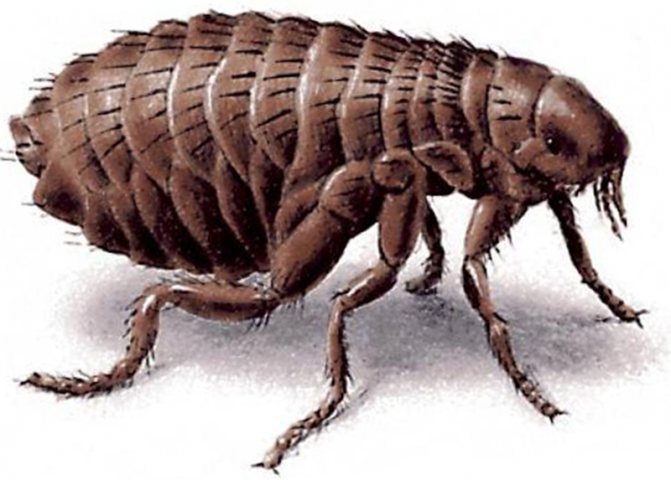

The nervous system is affected. Mortality reaches 30%.
Fleas are a reservoir of immature forms of worms. If you crush a flea and don't wash your hands, there is a high chance of contracting parasitic worms.
The following pathologies occur more frequently in children than in adults:
- Allergic reactions.
- Swelling.
- Rash.
- Migraine.
- Lymphadenitis.
How to eliminate the effects of bites
The main task of a person who saw a flea bite in himself or his pet is to prevent scratching the wound. To do this, it is necessary to eliminate the symptoms - itching, inflammation. Simple folk remedies help
When signs of complications appear, it is important to start treatment on time with the use of medications (including anti-inflammatory, anti-infective creams)
How to relieve itching and pain
The first thing to do is to disinfect the bite with iodine, alcohol, or antibacterial soap. This will help prevent the spread of the infection.
The next task is to relieve the itching. The easiest way is to apply a piece of ice or cheesecloth moistened with cold water to the bite site. This will stop the urge to scratch for a few minutes. A longer effect is given by the use of a cream with hydrocortisone or antipruritic drugs (Fenistil gel, Psilobalm). Can be used:
- tea tree oil;
- strong tea leaves;
- decoction of chamomile.
It is necessary to soak a cotton swab in liquid and apply to the itchy part of the body.


If you treated the cat with some kind of cream or oil, then do not forget to put a collar on the animal that does not allow licking of the product
Allergic reaction
Insect allergies (an acute reaction to enzymes from insect saliva) are treated with antihistamines. In case of local edema, skin rash, it is better to use creams and gels. If a reaction occurs in the form of an increase in temperature, nausea, vomiting, an antiallergic drug should be taken internally (in the form of tablets, drops) or an injection should be given.
With a strong reaction to bites in humans, topical corticosteroids are prescribed (Methylprednisolone aceponate, Mometasone furoate, etc.).In very severe cases of allergy to flea bites, take Prednisol (course no more than 3 days).
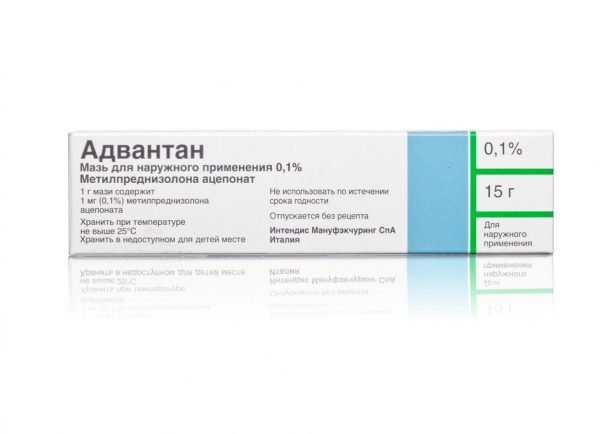

Advantan - an ointment based on methylprednisolone aceponate - used for severe allergic reactions to flea bites
Flea allergies in cats are also treated with antihistamines. Since the animal tends to lick or wipe the creams on the floor and furniture, it is preferable to inject drugs through injections - for example, to give injections of Dexamethasone, Flumethasone, Methylprednisolone, Betamethasone, etc.
Dermatophiliasis treatment
Due to repeated scratching of one place, dermatophiliasis occurs - a secondary infection, accompanied by the appearance of pustules (abscesses) or ulcers. For treatment, treatment of wounds with a 1-2% solution of menthol or salicylic alcohol is used (3-4 times a day). The patient is given antibiotics:
- Amoxiclav;
- Coamoxiclav;
- Trimethoprim.
The remedy should be selected by the doctor depending on the stage and form of dermatophiliasis and its complications
It is important to note that this therapy is suitable for both humans and cats - the only difference is in the dosage of the drugs.
Sources of
Fleas in dogs that are not noticed in time are dangerous to humans, so check the animals regularly. However, pets are far from the only source of these parasites. Very often, cat fleas are transmitted to a person after he:
- will go hunting;
- take a walk in the forest;
- will work on his own farm or on a farm.
We suggest that you familiarize yourself with: How to get rid of a whitefly at home
Fleas from cats are transmitted to a person looking into holes, hollows and nests. Seeing a fresh food source in front of them, insects are happy to get to know it. Hunters, lumberjacks, natural scientists are all at high risk. Fleas are always dangerous for a person who breeds livestock or works in this industry.
If there are many potential objects, even regular care does not provide proper sterility. It is almost impossible to fight parasites here. Fleas can transfer to humans from cats, which prevents them from jumping from cows or rabbits. Even just relaxing in nature, you too can be attacked. Pests living in a forest or a clearing do not have to choose. They are happy to have any blood donor.
Naturally, fleas most often pass from cats to people who keep four-legged friends in the apartment. According to statistics, only one in four pets is not regularly attacked by these pests. Even "sloths" who practically do not leave their homes are not immune from bites. Sometimes it is enough to open a window.
Dog fleas are transmitted to humans when inspecting a dog's habitat. They usually live and breed in a litter or booth. Young people who are hungry rarely wait for more familiar food. Human blood is not so tasty, but no less nutritious. As we have already noted, it is not so important whether cat fleas live on a person.
What are parasites and their development cycle
In tiny insects, an oval, laterally flattened body up to 5 mm long, brown or black, covered with chitin. They do not have wings, but thanks to the hind limbs (there are 6 of them in total) they jump very well - up to 30 cm, forward up to 20 cm.The life expectancy is on average 2 months.
Attention! Fleas are saturated with the blood of mammals, birds, piercing the skin with their jaws. They live on the body of an animal and next to it in a sleeping place. Many species, parasitizing on a "host" with a suitable body temperature, skin thickness, can bite other warm-blooded creatures.
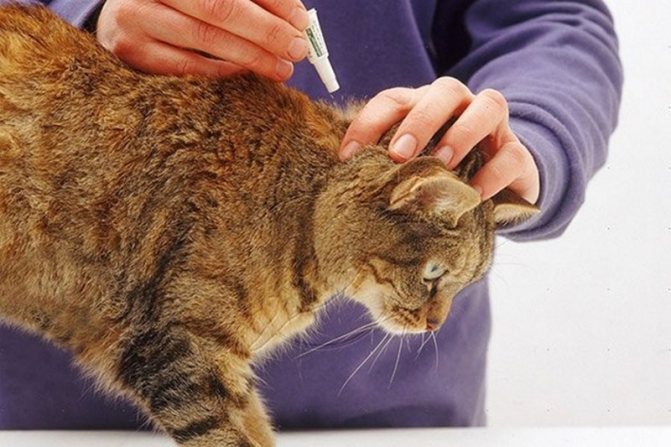

The development of all fleas is the same:
- After fertilization, the female sucks blood and lays eggs 20-50 pieces at a time. Tiny white grains do not attach to anything, so they easily crumble when moving.
- After 10-14 days, a larva emerges from the egg. She cannot bite through her skin and eats semi-digested flea excrement, organic waste.
- The larva grows for 20-21 days, changing the cover of the body every week. Then it pupates, creating a sticky shell for itself.
- In favorable conditions, a mature flea emerges from the cocoon in a few days. If it is difficult to survive outside, the pupa can lie for up to 3 months.
- An adult insect searches for an object suitable for feeding and begins the development cycle of the next generation of parasites.
There are many types of fleas, they differ insignificantly in appearance. Most often there are felines, which are also suitable for dogs and rodents. Without food, they can last up to 2 months.
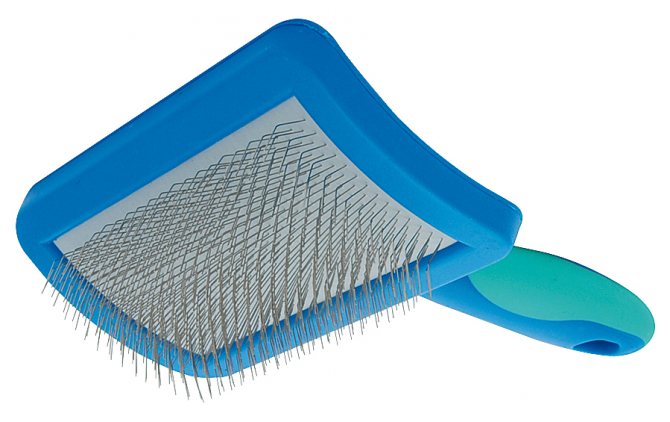

Crest
Blood-sucking insects do not live on cats all the time. They jump on the nearest animal to satisfy their hunger, and then hide in cracks, folds of furniture, under a couch.
If there are too many parasites or they have recently emerged from the cocoon, a situation is likely when hungry fleas will attack not only a cat, but also another warm-blooded object suitable for feeding - a dog, a rodent, or a person. After taking a few bites and getting drunk, they will jump back.
It is a mistake to believe that feline parasites do not bite people or, conversely, settle on their bodies. Fleas found in cats are transmitted to humans: under certain conditions, they drink his blood. They especially like the thin skin of children. Bites are found on the legs if an insect has jumped from the floor, and any part of the body can be injured in a lying person.
1. Plague
2. Helminths
4. Anemia
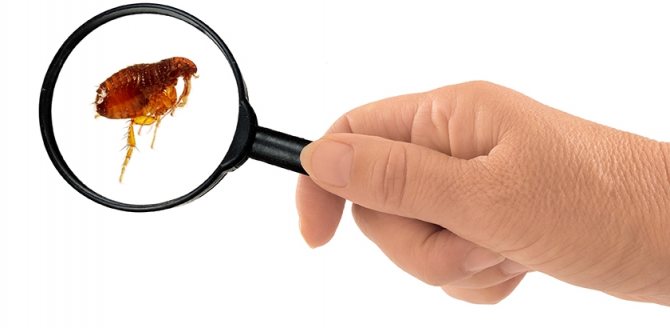

Not all feline parasites are transmitted to humans. If the animal is infected with worms, then, of course, all family members need to do an analysis of feces or scrapings for the presence of worms and larvae. Such parasites are easily transmitted from pets to their hosts and can lead to serious illness.
Can fleas pass to humans just as easily? Many people confuse two different types of parasitic insects - fleas and lice. Lice really live in people's hair, they are also blood-sucking insects and bite. However, for a flea, the human body as a habitat is not suitable. This parasite needs a thick coat to hide in and lay eggs.
Determining if a cat has become infected with fleas is easy. The insect bites the cat, so it becomes restless and itches constantly. With the naked eye, crawling or adhering parasites are visible on the coat, especially in the abdomen.
We offer you to familiarize yourself with Tansy - medicinal properties and contraindications
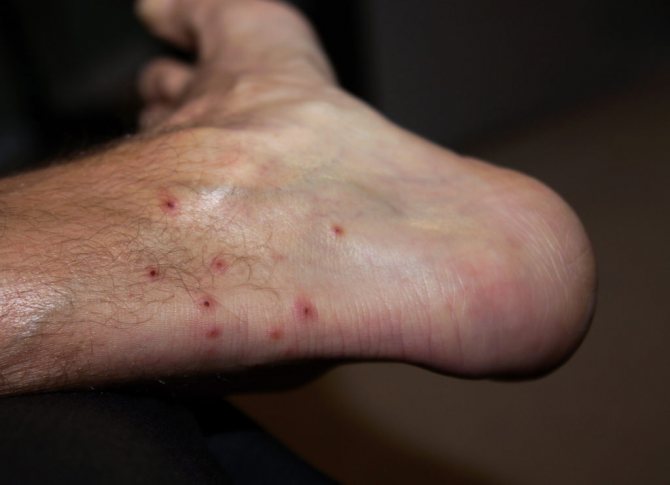

Flea bites
Despite the fact that a cat flea cannot live on a human body, a cat owner can still find red itchy dots on themselves - bites. The insect easily passes from the animal to its owner, which serves as a food source for the parasite. They pierce the skin and drink blood.
Flea bite signs:
- pain, burning at the site of the bite;
- swelling and redness;
- blisters may appear;
- serial arrangement of bites - groups of spots at a distance of 2 cm from each other.
Fleas rarely live directly on a cat's body. Most often, they settle in bedding, and the animal is used for feeding or laying eggs. The insect jumps onto a person upon direct contact with the pet or upon contact with the place where the cat spends most of the time. Not only cats are in danger, but also dogs, domestic rats, rabbits - a cat flea is able to feed on other animals with thick hair.
Feline fleas will not be able to bite through human skin, so they will not choose us for permanent residence. But they can try to feast on human blood - after biting a couple of times and making sure that a person is not suitable for them to feed, they will immediately jump off. It seems to sound harmless, but these small bites will itch, there will be swelling and redness.
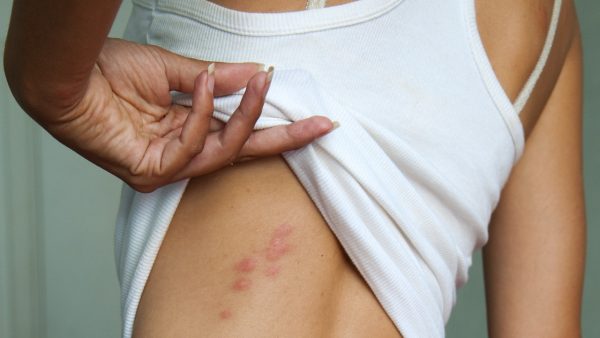

Inflamed bumps on the skin and itching are signs of an allergic reaction to insect saliva.
Flea bites cause severe itching.Scratching the damaged areas of the body leads to infections entering the wound, which causes it to become inflamed and fester. The biggest danger is that parasites are carriers of encephalitis, plague, typhus, salmonellosis, tularemia and more than 25 other deadly diseases.
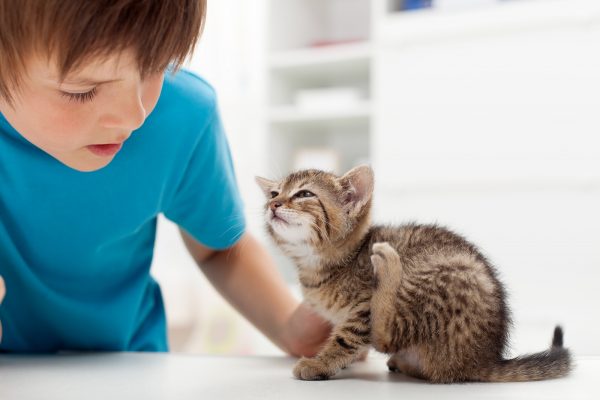

Fleas can carry not only infections, but eggs of worms
Flea protection
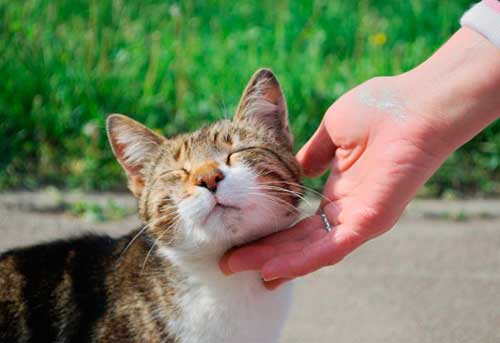

A cat is able to bring several parasites from the street, which, having rapidly multiplied, will attack a person. To protect yourself from arthropod aggression, the following precautions are necessary:
- When going out into nature, dress so as not to leave open areas of the body.
- Do not allow your pet to communicate with street cats.
- Conduct regular examination of the animal, pay attention to its behavior.
- Destroy detected parasites.
- Regularly carry out pest control of the apartment.
- Pay due attention to cleaning the premises.
Means for treating apartments against fleas
Treatment of an apartment from fleas is preceded by the following preparation:
- Garbage collection, including balconies, under bathrooms, on shelves.
- They release the approaches to the skirting boards, move the furniture aside.
- Animals and people are removed from the apartment.
The person processing the room puts on protective clothing, gloves, glasses, sprinkles with insecticide the surface of the floor, walls, wallpaper, furniture. The carpets are rolled up. The shelves of storage rooms, balconies, and the floor under the carpet are treated with special care. Leave the room for the time specified in the instructions for use of the insecticide. Carry out wet cleaning. Laundry and clothes are washed in hot water. The procedure is repeated at intervals of two weeks.
Prevention measures
Parasitic infection, like any other disease, is easier to prevent or treat in the early stages than to try to get rid of in an advanced form:
- To prevent your cat from being attacked by fleas, try not to let it go outside and limit your pet's contact with animals that you are not sure of the cleanliness of.
- Clean the house as often as possible, do not walk around the apartment in street shoes (after all, parasites can be brought on the soles of boots).
- Check and brush your pet regularly - if you find the slightest sign of fleas, take immediate prophylaxis (for example, wash it with a flea shampoo). The sooner you find fleas (before they multiply), the sooner you destroy them.


Flea collars are not very good at dealing with severe infestations, but are ideal for prevention.
Fleas not only cause discomfort in the animal, but can also infect a cat with worms, cause allergies, dermatitis, infectious diseases, and lead to anemia. In humans, cat fleas do not settle, but they will easily leave a couple of itchy bites. To cope with harmful insects will help applying special products (shampoos, sprays, drops) to the cat, as well as thorough treatment of the premises with antiparasitic solutions.
Pets walking on the street should wear special collars that repel and kill fleas. Pets need to be regularly examined in order to timely identify the appearance of parasites. It is better not to touch street dogs and cats, and after accidental contact with them, wash your hands with an antiseptic.
Frequent cleaning of surfaces with a vacuum cleaner, a cloth with detergent, timely removal of garbage, and washing of animal beds are recommended.
Wormwood, celandine have a repellent effect - bundles of herbs can be spread out at the entrance to the room.
Fight against parasites
As soon as fleas have been found in the house, you need to immediately start taking measures to destroy them, because the more time passes, the larger their population will become. The procedure consists of two mandatory stages: processing the animal and processing the premises.
Treating a cat
For the treatment of a pet, special means are used, developed specifically for cats.They can be produced in various forms:
- drops on the withers (Bars, Frontline Spot on Cat, Advocate, Api-San, Advantage). They are highly effective, suitable for adult cats, and special lines for kittens and pregnant animals. The active ingredient is usually an insecticidal substance (fipronil, methoprene). The average duration of the effect is 2 months;
- sprays (Frontline, Bars). They have the same active components and are similar in their action to drops, differ only in the method of application;
- flea collars. This method provides longer-term protection against parasites - for 2-3 months or more. The composition contains all the same insecticides - the collar itself is impregnated with them, so the protection is effective all the time that the animal is wearing a useful accessory. The most popular collars are from Beaphar (protection up to 180 days), Bars (protection up to 120 days) and Foresto (protection up to 240 days);
- flea shampoos (Beaphar Bio Shampoo, RolfClub, Doctor ZOO) are used as an element of complex therapy. Special products are suitable for both kittens and pregnant women. The composition may include insecticides, herbal ingredients, cleansing and moisturizing ingredients.
Photo gallery: remedies for combating fleas in cats
The spray form has the same active components as drops on the withers, but the method of application to the animal is different


Flea shampoos are used as an element of a comprehensive fight against parasites The shape of the drops is most convenient for treating domestic cats, one application allows you to protect the animal for up to 2 months. Flea collars allow you to provide a domestic cat with the longest possible protection from parasites
Before and after treatment, the cat should not be bathed for 3 days. Therefore, the following treatment regimen is usually offered:
- bathing with flea shampoo;
- after three days - treatment with drops, spray or putting on a collar;
- changing the collar or re-processing after the manufacturer's recommended time interval.
Room processing
Most fleas do not live on a cat, so processing an animal is a way to protect a pet, but not to get rid of fleas in an apartment. It is important to properly process the entire room:
- At the first stage, it is necessary to clean the house - to vacuum all carpets, furniture, bedding for a cat, wash clothes, soft toys, and implement a thorough wet cleaning.
- Treat the room with fleas. It can be a spray that is most convenient for small apartments (Raptor, Combat), concentrate for solution preparation (Biorin, Chlorpyrimak).
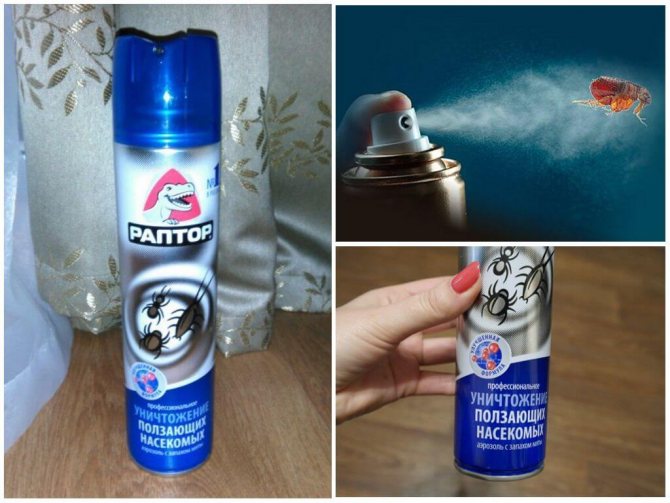

Aerosol "Raptor" is intended for the treatment of premises from crawling insects, including fleas
- You can also use insecticides to treat the place where the cat sleeps.
- After processing, you need to ventilate the room and leave the substances for the maximum possible time. If there is no opportunity to leave for a few days, then the places with which people will contact should be washed with soapy water.
If there are too many fleas, then it is better to entrust their destruction to professionals and seek the appropriate service from exterminators.
How to recognize flea bites on the body
Flea bites on a person are felt immediately by acute pain, like from a needle. Bloodsuckers leave characteristic traces that cause flushing, edema, and allergic itching. Flea bite symptoms in most cases are manifested by a local reaction:
Shortly after the attack, a red, swollen spot remains on the skin with no visible puncture point. Fleas have only one short proboscis, leaving a small inconspicuous hole. In addition, small hemorrhages - hemorrhages - occur under the skin at the site of blood suction. Flea bites on a person are arranged in piles of 2 or 3 spots, resembling constellations in the sky. The distance between the wounds is no more than 1–2 cm. Insects prefer to feed on the legs or feet, less often on the trunk and arms.The blister is manifested by severe itching, burning, and lasts for several hours. But the hemorrhages remain for several days.
If there are too many bites on one area of the skin, hemorrhages become the cause of the development of pulicosis. Dermatological disease manifests itself as thickened, red lesions. Only fleas can leave such spots. Pulicosis is in most cases caused by the human bloodsucker.
Flea bites differ from one another. For feline and rat representatives, small wounds that resemble an allergic rash are characteristic. Flea attacks on large animals cause painful swelling. They are comparable to the tracks of bees.
Important! Basement flea bites are localized under the nail. Bloodsuckers lay eggs in the same place, from which larvae emerge
In this case, the wound itches, swells and festers.
Flea bites in children are manifested by a vivid clinical picture. In babies, the temperature rises to 40.0 ° C, diarrhea, anxiety appear. Not so often, but subcutaneous hemorrhages occur - pulicosis. The disease requires treatment by a dermatologist.
The consequences are more dangerous than for adults. Even an attack by one bloodsucker can cause hives. This rash makes it difficult to recognize the culprit. The reaction can be intense and unpredictable. Some babies develop a nervous breakdown.

